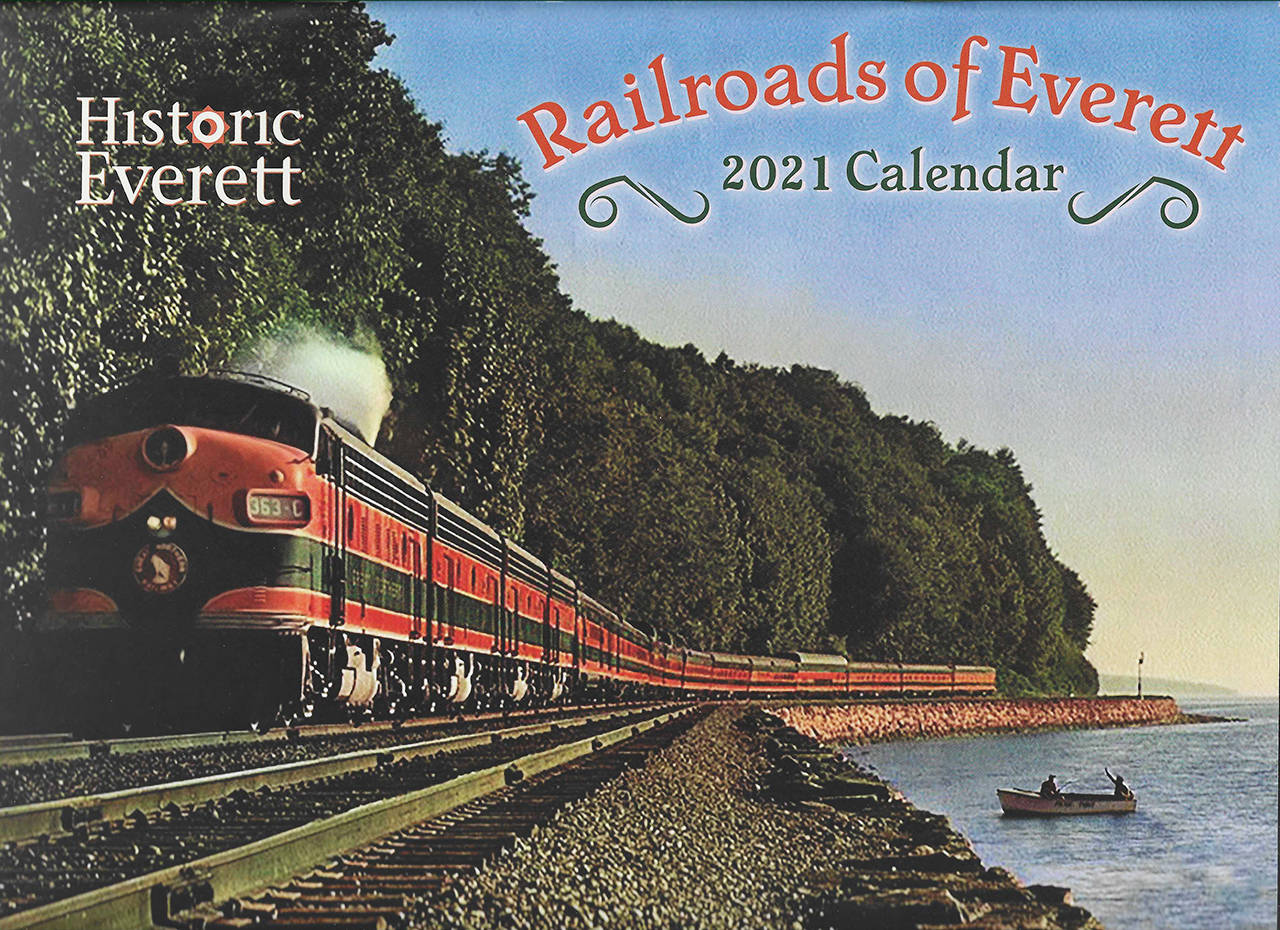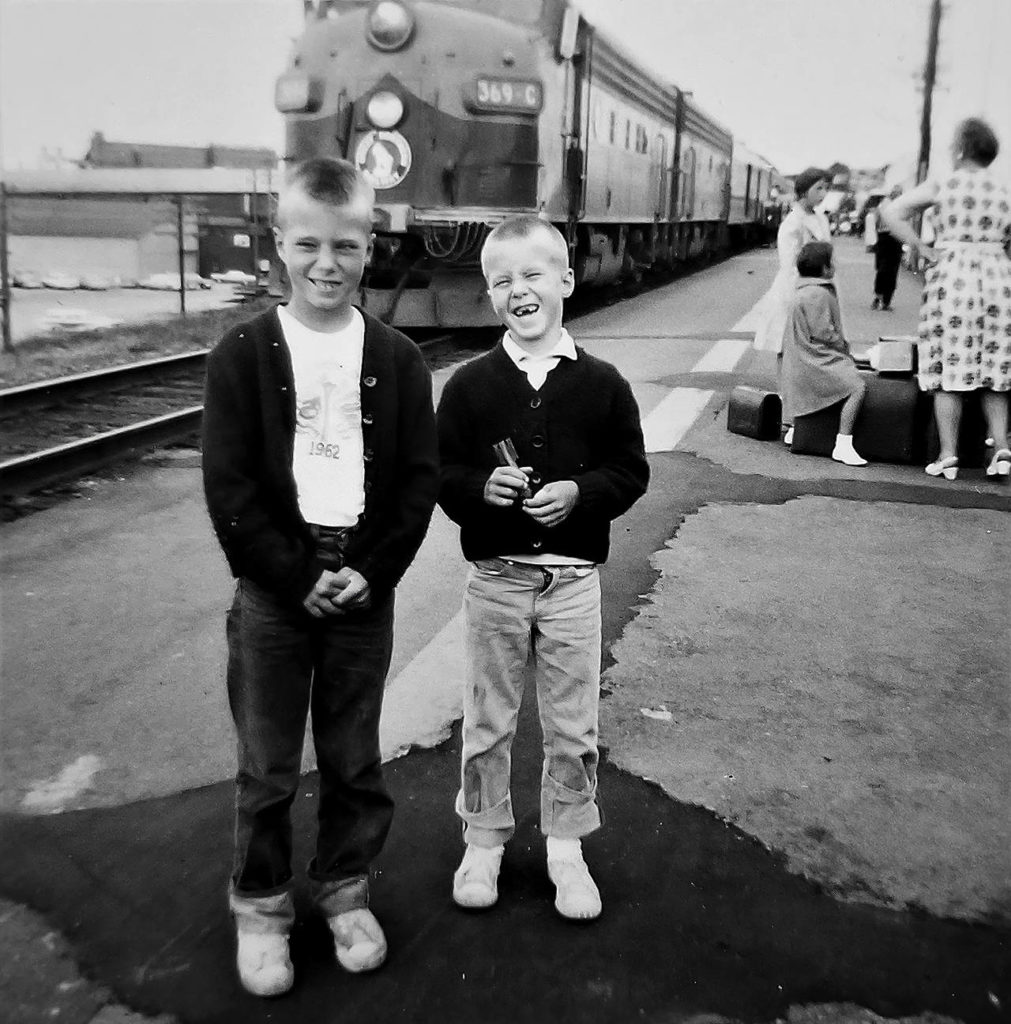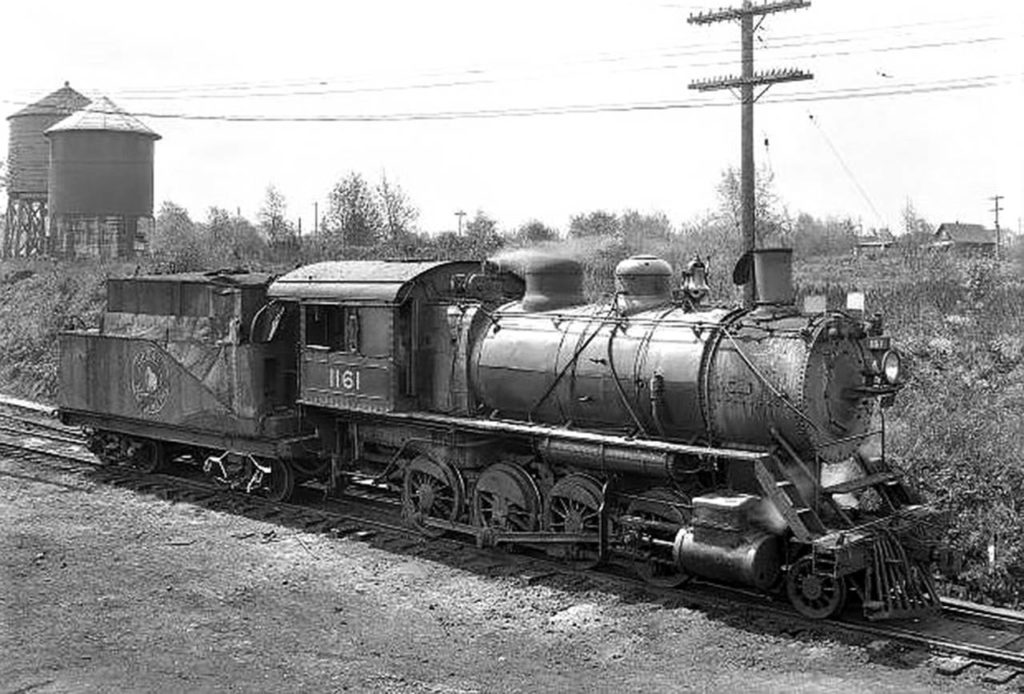A boater waves at the Great Northern Railway’s Empire Builder as the bright-orange train negotiates a curve south of Mukilteo. You can’t hear the horn — still, it’s a blast from the past. The nostalgic photo, from the late 1940s or early ’50s, is the cover of Historic Everett’s 2021 calendar.
“Railroads of Everett” is the theme of this 16th calendar published by the preservation group. Sales of the calendars — which in years past have featured such varied topics as saloons and brothels, churches, historic homes, schools and mid-century modern architecture — support the heritage group’s educational programs.
Like previous calendars, the newest is as much a history lesson as it is something to hang on a wall to remember appointments. Its two-page introduction tells complex stories of three major rail lines that made their way to early Everett: the Great Northern Railway, the Northern Pacific Railway and the Milwaukee Road.
And a century before Sound Transit’s Link light rail, there were Everett-Snohomish and Everett-Seattle interurban lines. There were Everett’s streetcars, too, run by the Everett Railway, Light & Water Co., in operation from 1893 to 1923.
“It would be wonderful if we had it today,” wrote Steve Fox, who researched and authored the calendar’s text. Fox, 64, gleaned information from books and relied on the knowledge of others. A dozen helpers are acknowledged on the calendar’s back cover. Among them are local historians Jack O’Donnell, Margaret Riddle, Neil Anderson and Bob Mayer; Lisa Labovitch, history specialist at the Everett Public Library; and Fred Cruger of the Granite Falls Historical Museum.
Retired from Boeing, Fox is chairman of the city of Everett’s Historical Commission and a Historic Everett member. He grew up in Portland, has lived here since 1997 and has been curious about the trains in Everett. He and his wife, Deborah Fox, live in Everett’s Riverside neighborhood.
“From our house on Baker, you can hear trains squealing around the corner out of the tunnel,” he said.
Deborah Fox has also taken deep dives into history. After creating a graphic novel in 2016 based on the Everett Massacre, she has just published a second one. “The Man Who Beat Death Valley” tells of William Lewis Manly, who saved pioneers in California.
“Trains are a super important part of Everett’s history,” Steve Fox said.
James J. Hill’s Great Northern “is arguably the most important railroad in Everett’s history,” Fox wrote in the introduction. Hill had interests in coal, steamboats, banking and railroads in Minnesota before setting his sights on a transcontinental line. Before Hill’s line from St. Paul reached Lowell in 1893, “there was great excitement that Everett would be the western terminus,” Fox wrote. In the end, Hill chose Seattle.
A Granite Falls Historical Museum photo shows a rugged construction scene as workers broke through rock to build the Everett and Monte Cristo Railway. By 1893, it reached the mining boom town of Monte Cristo, where riches came from ore containing gold, silver, copper and zinc.
Logging and other industries have relied on rails in more recent times. In 1966, when Boeing’s 747 factory needed rail access, a steep spur line was built off the Great Northern, from Mukilteo up Japanese Gulch to the plant.
At 66, Everett native Neil Anderson has memories of boyhood train rides and learning of his hometown’s past. His grandfather, Edward Hartley, was the son of Roland Hartley. Washington’s governor from 1925 to 1933, Roland Hartley was an Everett mill baron and once Everett’s mayor and a state legislator.
Edward Hartley, who died in 1972, would take grandson Neil to Everett’s waterfront. Decades before, the Clough-Hartley Shingle Mill was in operation from 1907 to 1929. David Clough, a former Minnesota governor, was Roland Hartley’s father-in-law. It was James Hill, the railroad magnate, who urged Clough to start a lumber business here.
Anderson once recalled his late grandfather as “a walking Everett history book.” His younger brother, Edward Anderson, was named after their grandfather.
“He’d take me and my little brother down to Great Northern’s Bayside Yard,” where trains had served the lumber mills, Anderson said. “It was truly the old working waterfront.”
On Thursday evening, Anderson presented an online Historic Everett program, sharing memories related to trains.
In the calendar is an early 1900s picture of the original Great Northern Railroad Depot on Bond Street. Its tower was removed in a 1962 renovation.
“At Christmas in the lobby they had a big tree,” Anderson said of the old Everett train station. “They used to decorate the depot. We’d go look at Christmas lights and my mom always had us stop there to see that.”
As a boy, his family would take the Empire Builder across the state every summer to see his aunt, uncle and cousins in Spokane. Anderson has magical memories of dining cars and observation dome cars.
Fox has also ridden the rails. Several years ago, he and his wife took a triangular trip starting with Amtrak’s Empire Builder from Everett to Chicago. From there, they took the California Zephyr to San Francisco. And from the Bay Area home, they rode the Coast Starlight.
“In the 1800s, it was the only way across the country unless you took a covered wagon,” Fox said. “There is a romance to it.”
Julie Muhlstein: jmuhlstein@heraldnet.com
Railroads calendar
Historic Everett’s 2021 calendar, “Railroads of Everett,” is available for $20 at J. Matheson Gifts, 2615 Colby Ave. in Everett, and online ($20 plus postage) at historiceverett.org.
Talk to us
> Give us your news tips.
> Send us a letter to the editor.
> More Herald contact information.



























